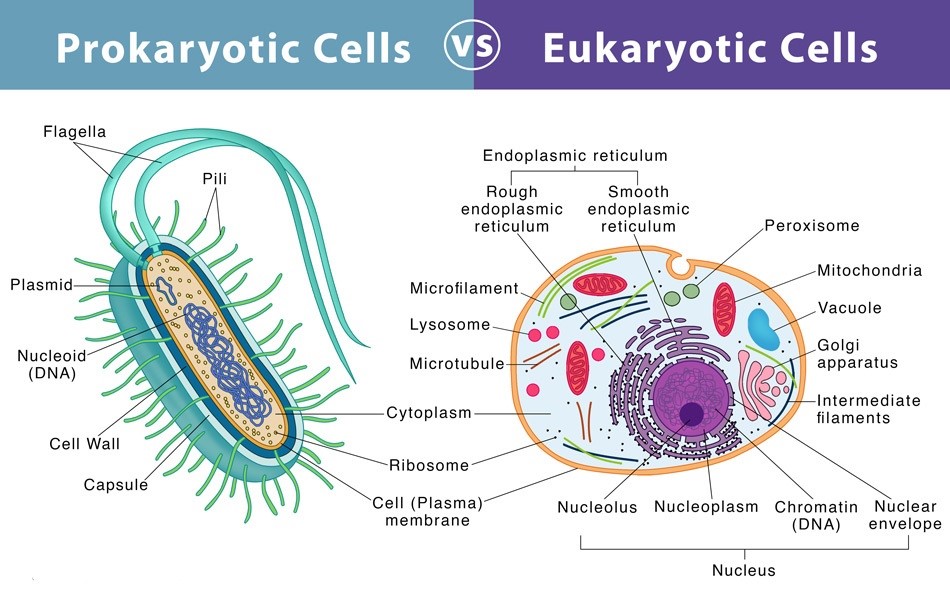Important Facts For Prelims
Evolution of Eukaryotes from Prokaryotes
- 27 Jun 2023
- 5 min read
Why in News?
Recently, there has been considerable interest in understanding the evolution of eukaryotes from prokaryotes, shedding light on the intriguing question of how complex cells with nuclei and organelles emerged.
- The prevailing theory of endosymbiosis suggests that eukaryotes evolved from a symbiotic relationship between an ancient archaeon (a primitive group of microorganisms that thrive in extreme habitats) and a bacterium.
What are Eukaryotes and Prokaryotes?
- Organisms on planet earth, based on the type of cells, are broadly divided into prokaryotes and eukaryotes.
| Prokaryotes | Eukaryotes |
|
|
How did Endosymbiosis Lead to Eukaryotes?
- Endosymbiosis is a process where one organism lives inside another and both benefit from the relationship.
- The endosymbiotic theory suggests that eukaryotes evolved from a small archaeon engulfing a bacterium.
- The archaeon protected the bacterium and provided a stable environment, while the bacterium supplied energy to the archaeon.
- Over time, they became dependent on each other and formed a new type of cell called a eukaryote.
- The engulfed bacterium became the mitochondrion, which produces energy for the cell.
- In plants, another endosymbiotic event occurred with a cyanobacterium becoming the chloroplast, responsible for photosynthesis.
- This symbiotic relationship allowed eukaryotes to grow larger, become more complex, and adapt to different environments.
UPSC Civil Services Examination, Previous Year Questions (PYQs)
Prelims
Q1. With reference to ‘stem cells’, frequently in the news, which of the following statements is/are correct? (2012)
- Stem cells can be derived from mammals only
- Stem cells can be used for screening new drugs
- Stem cells can be used for medical therapies
Select the correct answer using the codes given below:
(a) 1 and 2 only
(b) 2 and 3 only
(c) 3 only
(d) 1, 2 and 3
Ans: (b)
Exp:
- Stem cells are undifferentiated or “blank,” cells capable of developing into cells that serve numerous functions in different parts of the body. Most cells in the body are differentiated cells. These cells can only serve a specific purpose in a particular organ. For example, red blood cells are specifically designed to carry oxygen through the blood.
- Stem cells are not only found in mammals but also found in plants and other organisms. Hence, statement 1 is not correct.
- Since stem cells have the ability to turn into various other types of cells, scientists believe that they can be useful for treating and understanding diseases. According to scientists, stem cells can be used to:
- Grow new cells in a laboratory to replace damaged organs or tissues.
- Correct parts of organs that do not work properly
- Research causes of genetic defects in cells.
- Research how diseases occur or why certain cells develop into cancer cells.
- Test new drugs for safety and effectiveness. Hence, statement 2 is correct.
- To carry out medical therapies. Hence, statement 3 is correct.
- Therefore, option (b) is the correct answer.







